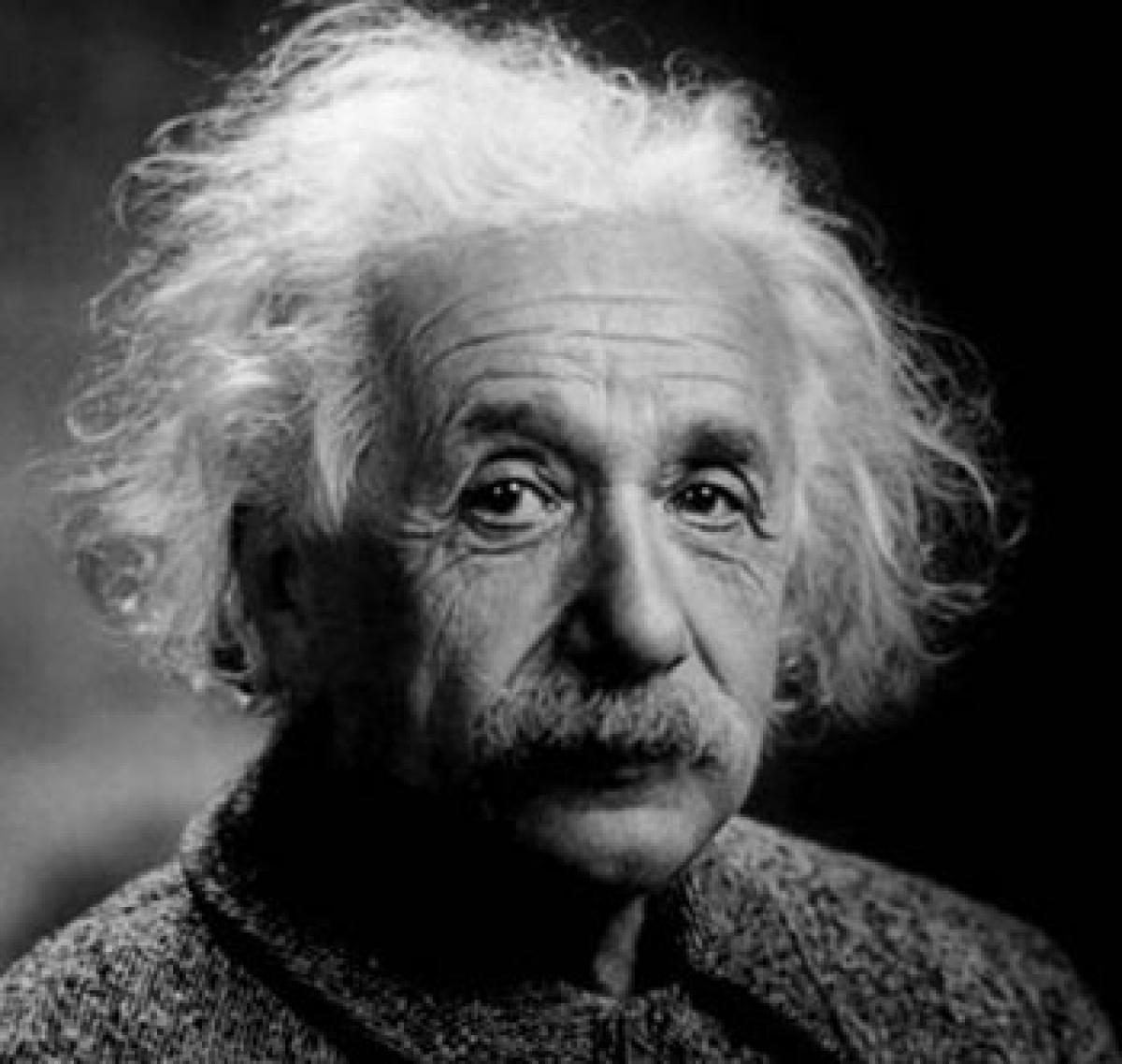Live
- Shraddha Das reigns as a fashion icon
- ‘Sarangapani Jathakam’ teaser set for Nov 21st release
- Nadendla Manohar announces WhatsApp services for grain purchase
- AP DCM Pawan Kalyan Addresses Public Rally in Ballarpur, Maharashtra
- ‘Pushpa The Rule’ trailer launch event: Massive fan frenzy in Patna
- Jyothika slams negative campaign on ‘Kanguva’
- It’s official: Naga Chaitanya and Sobhita Dhulipala to tie the knot in December
- ‘Kantara: Chapter 1’ locks release date for Oct 2025
- Telangana to Implement New EV Policy from Tomorrow, Aims for Cleaner Environment
- I was surprised with ‘Zebra’ script: Dolly Dhananjaya
Just In

Einstein\'s mass-energy equation (E=mc2) is inadequate as it has not been completely studied and is only valid under special conditions, an Indian researcher has claimed in an international paper.
Shimla: Einstein's mass-energy equation (E=mc2) is inadequate as it has not been completely studied and is only valid under special conditions, an Indian researcher has claimed in an international paper.
Einstein considered just two light waves of equal energy emitted in opposite directions with uniform relative velocity, Ajay Sharma, a Shimla-based researcher who challenged Albert Einstein's derivation mass-energy equation, said on Sunday.
The equation was given by Einstein in 1905. His technical paper -- "The mathematical derivation or speculation of E=mc2, in Einstein's September 1905 paper, and some peculiar experiments" -- was published by Bauman Moscow State Technical University in Moscow last month.
E=mc2 means energy is equal to mass multiplied by the speed of light squared. Sharma, an assistant director for education with the Himachal Pradesh government, told IANS that Einstein's theory has not been studied completely.
"It's only valid under special conditions of the parameters involved, e.g. number of light waves, magnitude of light energy, angles at which waves are emitted and relative velocity," he said.
Einstein considered just two light waves of equal energy, emitted in opposite directions and the relative velocity uniform.
There are numerous possibilities for the parameters which were not considered in Einstein's 1905 derivation, said Sharma's paper. This equation expresses the fact that mass and energy are the same physical entity and can be changed into each other, the paper said.
It said E=mc2 is obtained from Lmc2 by simply replacing L by E (all energy) without derivation by Einstein. "It's illogical," he said. The paper said Fadner correctly pointed out that Einstein did not mention E in the derivation.
Sharma's book, 'Beyond Einstein and E=mc2' published by the Cambridge International Science Publishers, says Einstein was not the original propounder of the theory of relativity -- rather he took work from existing literature and published it in 1905 in German journal 'Annalen de Physik'.
"Many people will be surprised that Einstein's work was not peer reviewed before publication. The first postulate of relativity was given by Galileo in 1632 in his book 'Dialogue Concerning the Two Chief World Systems'," the 51-year-old Sharma said.
According to him, Einstein took this opportunity to publish the work of Galileo (1632, Principle of Relativity), Poincare (1898, Constancy of Velocity of Light), Lorentz (1892, Variation of Mass etc), Larmer (1897, Time Dilation), and Fitzegerald (1889, Length Contraction) in his own name.
Although Einstein's theory is well established, it has to be critically analysed and the new results would definitely emerge, a beaming Sharma added.

© 2024 Hyderabad Media House Limited/The Hans India. All rights reserved. Powered by hocalwire.com







